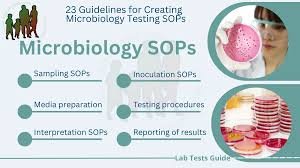SOP for Microbiological Integrity Testing of Vials

1. Purpose
To describe the procedure for performing microbiological integrity testing of sealed vials to ensure container closure integrity and sterility assurance.
2. Scope
This SOP applies to all finished sterile product vials manufactured in the facility that require container closure integrity (CCI) verification through microbiological testing.
3. Responsibility
-
Analyst/Microbiologist: Perform the test as per procedure, maintain records.
-
QC Supervisor: Review results and ensure compliance.
-
QA Department: Ensure adherence to GMP, review, and approve records.
4. Materials & Equipment
-
Sterile culture medium (e.g., Fluid Thioglycollate Medium, Soybean Casein Digest Medium)
-
Sterile incubation containers
-
Test microorganisms (as per pharmacopeia, e.g., Brevundimonas diminuta, Pseudomonas aeruginosa, Bacillus subtilis)
-
Sterile forceps, needles, syringes
-
Incubators (20–25°C and 30–35°C)
-
Laminar air flow hood (LAF)
-
Personal protective equipment (PPE)
5. Procedure
5.1 Preparation
-
Verify cleanliness of LAF and perform routine sanitization.
-
Ensure all media are sterility tested and within expiry.
-
Label vials appropriately for identification.
5.2 Test Method (Microbiological Immersion Method – USP/Ph. Eur.)
-
Select sample vials (as per sampling plan).
-
Wipe vial surfaces with disinfectant before testing.
-
Completely or partially immerse sealed vials into sterile culture medium.
-
Inoculate medium with challenge microorganisms if required by protocol.
-
Incubate at:
-
20–25°C for 7 days (for fungi/yeasts).
-
30–35°C for 7 days (for bacteria).
-
-
Observe daily for signs of microbial growth (turbidity, sediment, pellicle formation).
-
Record observations.
5.3 Acceptance Criteria
-
Pass: No microbial growth observed in the medium throughout incubation.
-
Fail: Any evidence of microbial growth indicates failure of vial integrity.
5.4 Post-Test Activities
-
Record results in the logbook.
-
Report failures immediately to QC/QA.
-
Dispose of tested vials and media as per biohazard waste SOP.
6. Precautions
-
Perform all operations under aseptic conditions.
-
Do not use expired or contaminated media.
-
Handle positive control organisms carefully under biosafety precautions.
-
Maintain proper segregation of test and control samples.
7. Documentation
-
Record sample details, media batch numbers, incubation conditions, results, and analyst signature.
-
Maintain test results in the Microbiological Integrity Testing Register.
8. References
-
USP <1207> “Container Closure Integrity Testing”
-
USP <71> “Sterility Testing”
-
Ph. Eur. 3.2.9
-
WHO TRS Annex 6
🎓 Discover one of the best Pharmaceutical Microbiology course available —click below to explore the course that’s shaping future Microbiology course skills.

